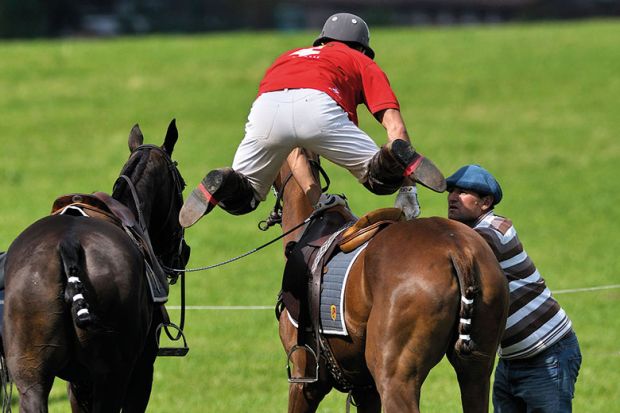Eighteen months after it dumped the university that had partnered it since its inception, a Sydney-based medical research institute is still living next door to its jilted spouse, amid suggestions that the increasing trend for research centre transfers is about boosting universities' research metrics.
Headquartering arrangements at the George Institute for Global Health, one of a number of Australian research centres that have recently jumped ship to join rival universities, raises questions over what motivates these defections.
The George remains based in the University of Sydney precinct, across the road from the university’s residential colleges, and maintains facilities in the university’s teaching hospital. It leases space from a theological college that moved there in the 19th century to be near the university.
The George’s decision to end its 18-year primary association with Sydney, announced early last year, took the university by surprise. The institute said that the move was motivated by an “alignment of strategies” with its new partner, the University of New South Wales.
George co-founder Robyn Norton said that her institute and UNSW shared a global focus and complementary research expertise. She highlighted the opportunity to work with the Kirby Institute, an infectious diseases research centre based near UNSW in Sydney’s east.
Rodney Phillips, dean of medicine at UNSW, said that the “very synergistic” alliance would give the George “adjacencies” to UNSW efforts. “The senior academic staff will move across to the University of New South Wales,” he said.
But while the George shifted its organisational affiliation, it has not changed location. UNSW said that there are no firm plans for the institute to move but that the two groups are in “active discussions” regarding a new health and education precinct planned next to the university.
A UNSW spokeswoman said that the George operated in multiple countries and the relatively short distance between the two organisations did not “pose a significant impediment”.
Vlado Perkovic, executive director of the George’s Australian operations, said that the institute had moved into its current facilities shortly before affiliating with UNSW and would not leave in the foreseeable future.
“We’re not on Sydney’s land or facilities,” he said. “We work very closely with the University of New South Wales. We aren’t finding the distance between us is any impediment to meaningful collaboration.”
Shifting allegiances are increasingly common in Australian research. In 2016, Sydney poached a team of almost 40 neuroscientists from a UNSW-affiliated institute, while UNSW’s Australian Institute of Health Innovation decamped to Macquarie University in 2014 – the same year that Western Sydney University’s Centre for Positive Psychology and Education left for the Australian Catholic University.
In 2011, dozens of sleep researchers defected from the University of South Australia to Central Queensland University, although they remained based in Adelaide. This year, a 60-strong mental health and substance abuse research team is leaving UNSW for Sydney, while Sydney’s Australian Stuttering Research Centre recently shifted to the University of Technology Sydney.
Observers say that these moves are about boosting universities’ research metrics and cutting a better deal for centres or institutes, which resent money being siphoned off by partner universities. Research institutes also begrudge the fact that they cannot formally award PhDs.
The Australian Stuttering Research Centre’s founder, Mark Onslow, said that his group had not benefited financially from this year’s move. But it had secured better facilities and the opportunity to lend its expertise to UTS’ new speech pathology degree.
He said that the presence of a “world-class research unit” would boost UTS’ performance in the research assessment exercise, Excellence in Research for Australia.
后记
Print headline: Are metrics driving Australia’s research institute transfer market?




